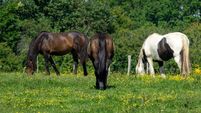Teagasc urges reviews ahead of EU reforms
Laurence Shalloo of the Teagasc Research Centre at Moorepark, Fermoy, said dairy farmers who apply the best business principles to labour, investment and financial management have a secure future in farming.
Addressing more than 700 dairy farmers at the first of two Teagasc dairy conferences, he said low cost animal housing systems will play a crucial role in the development of a competitive industry.










